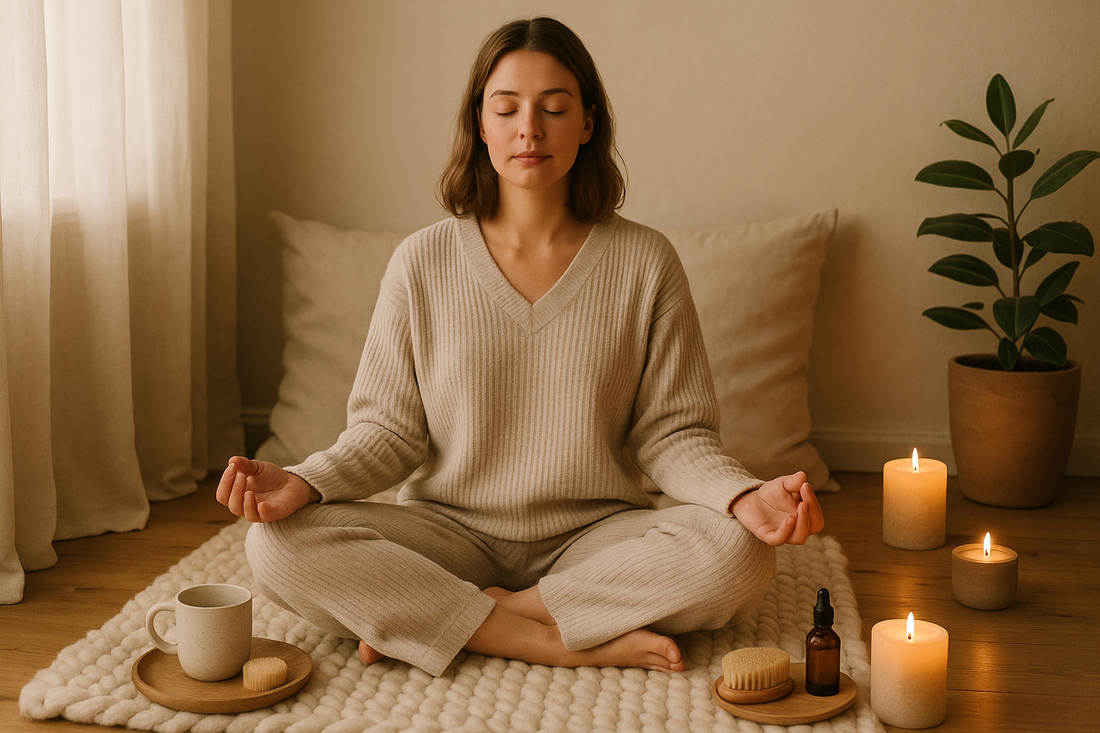
Self-Care Through Clothing: Comfort, Colors, and Confidence
Our clothing choices have a profound impact on our emotional and psychological well-being. What we wear can influence our mood, confidence, and overall sense of comfort in our own skin. In this article, we'll delve into the psychology of comfort wear, the science of mood-boosting colors, the therapeutic effects of different textures, the practice of mindful dressing, and how fashion can be a powerful tool for building confidence and supporting emotional wellness.
The Psychology of Comfort Wear
Comfort wear goes beyond just physical comfort; it's also deeply connected to our emotional state. Wearing clothes that feel good against our skin can reduce stress and anxiety while promoting feelings of relaxation and security. This is why many people turn to comfort wear during challenging times—it provides a sense of stability and normalcy. The key is finding that perfect balance between style and comfort, where you feel both put together and completely at ease.
Mood-Boosting Colors
Colors have a profound effect on our mood and emotions. Warm colors like orange, yellow, and red can energize and uplift us, while cool colors like blue, green, and purple can calm and soothe. By incorporating mood-boosting colors into our wardrobe, we can use fashion as a tool to influence our emotional state. For example, wearing a bright yellow sweater on a gloomy day can help counteract feelings of sadness or lethargy.
Texture Therapy
Touch is one of our most powerful senses, and the textures we wear against our skin can have a therapeutic effect. Soft, gentle fabrics like cotton, silk, and bamboo can be calming and comforting, while rough or itchy textures can cause irritation and discomfort. Many people find that wearing natural fibers next to their skin helps them feel more grounded and connected to their body. Experimenting with different textures can help you find what works best for your emotional and physical comfort.
Mindful Dressing
Mindful dressing is the practice of paying attention to how your clothes make you feel, both physically and emotionally. It's about being present in your body and honoring its needs. When getting dressed, take a moment to notice how each piece of clothing feels against your skin and how it makes you feel about yourself. Do certain clothes make you feel more confident or relaxed? Mindful dressing helps you tune into your inner wisdom and make choices that support your well-being.
Building Confidence Through Fashion
What we wear can significantly impact our self-perception and confidence. Wearing clothes that make us feel good about our body and appearance can boost our self-esteem and prepare us to take on challenges. This isn't about trying to change our bodies to fit societal standards but about finding clothes that celebrate our unique shape and style. When we feel confident in what we're wearing, we're more likely to take risks and pursue our goals with greater assurance.
Emotional Wellness Through Fashion
Fashion is often seen as superficial, but it can be a powerful tool for supporting our emotional wellness. By making conscious clothing choices that align with our emotional needs, we can use fashion as a form of self-care. This might mean wearing clothes that hold positive memories, avoiding styles that make us feel self-conscious, or incorporating symbolic items that remind us of our strengths and resilience.
Creating Personal Comfort Rituals
Developing personal comfort rituals around your clothing choices can help you feel more connected to your body and emotions. This might be as simple as always wearing a specific piece of jewelry that holds emotional significance, having a go-to comfort outfit for tough days, or practicing a daily dressing ritual that helps you feel more grounded. By incorporating these rituals into your daily life, you can turn the act of getting dressed into a meaningful self-care practice.
Conclusion
Self-care through clothing is about recognizing the profound impact our wardrobe choices have on our emotional and psychological well-being. By understanding the psychology of comfort wear, harnessing the power of mood-boosting colors, exploring the therapeutic effects of different textures, practicing mindful dressing, building confidence through fashion, supporting emotional wellness, and creating personal comfort rituals, we can transform our relationship with clothing into a powerful self-care practice.
